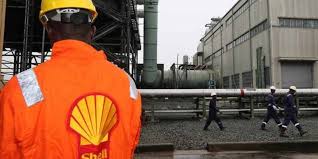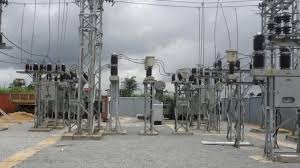Oil & Energy
Court Adjourns Worker Vs NLNG Matter To Oct

The National Industrial Court sitting in Port Harcourt, on Thursday, adjourned the matter on the defamation of character and unlawful termination of employment between a contract worker, Tambari Michael, and the Nigeria LNG Limited to October 25, 2022.
The judge, Justice Nelson Ogbuanya, said the adjournment was to enable the new counsel to the claimant, Mecha Mecha Kalu, to study the case before continuing.
Recall that the clamnant, Tambari Michael, a former contract staff of NLNG, had approached the court in 2019 to challenge the termination of his appointment by the Supervisor of NLNG’s Logistics, praying the court to declare the termination of his job as illegal and unlawful third party interference.
Michael in the suit number NICN/ PH/43/2019 claimed that displaying his name and image amongst persons accused to have committed criminal offensCes was defamatory, which, according to him, runs contrary to Section 4 of the NLNG Code of Conduct bordering on harassment.
Defendants in the suit are Nigeria LNG Limited, AUGJ Services Nigeria Ltd (the contracting firm) and Abimbola Ibukunle, the company’s Logistics Supervisor when the services of the claimant were terminated.
Other demands stated by the Claimant in the suit are “Damages be awarded to claimant against 1st defendant (Nigeria LNG Limited) and 3rd defendant (Mrs. Abimbola Ibikunle) for defamatory publication made.
“Damages also to be awarded against 1st and 3rd defendants for unlawful interference upon Mr Tambari Michael’s employment with AUGJ Services (2nd defendant).”
When the matter was called in the court on Thursday, counsel to the claimant, Mecha Mecha Kalu, who appeared in court for the first time, informed the court that he had just taken over the matter as counsel and solicitor to the claimant.
Speaking to newsmen after the court session, counsel to the claimant, Mecha Mecha Kalu expressed confidence that his client will get justice in the court but, counsel to the defendant declined comment.
Oil & Energy
Nigeria Loses More Crude Oil Than Some OPEC Members – Nwoko

Nigeria’s losses due to crude oil theft has been said to be more significant than those of some other members of the Organisation of Petroleum Exporting Countries(OPEC).
The Chairman, Senate Ad- hoc Committee on Crude Oil Theft, Senator Ned Nwoko, made this known in an interview with newsmen in Abuja.
Nwoko noted with dismay the detrimental impact of the issue, which, he said include economic damage, environmental destruction, and its impact on host communities.
According to him, the theft was not only weakening the Naira, but also depriving the nation of vital revenue needed for infrastructure, healthcare, education and social development.
The Senator representing Delta North Senatorial District described the scale of the theft as staggering, with reports indicating losses of over 200,000 barrels per day.
Nwoko disclosed that the ad hoc committee on Crude Oil Theft, which he chairs, recently had a two-day public hearing on the rampant theft of crude oil through illegal bunkering, pipeline vandalism, and the systemic gaps in the regulation and surveillance of the nation’s petroleum resources.
According to him, the public hearing was a pivotal step in addressing one of the most pressing challenges facing the nation.
‘’Nigeria loses billions of dollars annually to crude oil theft. This is severely undermining our economy, weakening the Naira and depriving the nation of vital revenue needed for infrastructure, healthcare, education, and social development.
‘’The scale of this theft is staggering, with reports indicating losses of over 200,000 barrels per day more than some OPEC member nations produce.
‘’This criminal enterprise fuels corruption, funds illegal activities and devastates our environment through spills and pollution.
‘’The public hearing was not just another talk shop; it was a decisive platform to uncover the root causes of crude oil theft, bunkering and pipeline vandalism.
‘’It was a platform to evaluate the effectiveness of existing surveillance, monitoring, and enforcement mechanisms; Identify regulatory and legislative gaps that enable these crimes to thrive.
‘’It was also to engage stakeholders, security agencies, host communities, oil companies, regulators, and experts to proffer actionable solutions; and strengthen legal frameworks to ensure stricter penalties and more efficient prosecution of offenders”, he said.
Nwoko noted that Nigeria’s survival depended
Oil & Energy
Tap Into Offshore Oil, Gas Opportunities, SNEPCO Urges Companies

Shell Nigeria Exploration and Production Company Ltd. (SNEPCo) has called on Nigerian companies to position themselves strategically to take full advantage of the growing opportunities in upcoming offshore and shallow water oil and gas projects.
The Managing Director, SNEPCO, Ronald Adams, made the call at the 5th Nigerian Oil and Gas Opportunity Fair (NOGOF) Conference, held in Yenagoa, Bayelsa State, last Thursday.
Adams highlighted the major projects, including Bonga Southwest Aparo, Bonga North, and the Bonga Main Life Extension, as key areas where Nigerian businesses can grow their capacity and increase their involvement.
“Shell Nigeria Exploration and Production Company Ltd. (SNEPCo) says Nigerian companies have a lot to benefit if they are prepared to take advantage of more opportunities in its offshore and shallow water oil and gas projects.
“Projects such as Bonga Southwest Aparo, Bonga North and Bonga Main Life Extension could grow Nigerian businesses and improve their expertise if they applied themselves seriously to executing higher value contracts”, Adams stated.
Adams noted that SNEPCo pioneered Nigeria’s deepwater oil exploration with the Bonga development and has since played a key role in growing local industry capacity.
He emphasized that Nigerian businesses could expand in key areas like logistics, drilling, and the construction of vital equipment such as subsea systems, mooring units, and gas processing facilities.
The SNEPCO boss explained that since production began at the Bonga field in 2005, SNEPCo has worked closely with Nigerian contractors to build systems and develop a skilled workforce capable of delivering projects safely, on time, and within budget both in Nigeria and across West Africa.
According to him, this long-term support has enabled local firms to take on key roles in managing the Bonga Floating, Production, Storage and Offloading (FPSO) vessel, which reached a major milestone by producing its one-billion barrel of oil on February 3, 2023.
Oil & Energy
Administrator Assures Community Of Improved Power Supply

The Emohua Local Government Area Administrator, Franklin Ajinwo, has pledged to improve electricity distribution in Oduoha Ogbakiri and its environs.
Ajinwo made the pledge recently while playing host in a courtesy visit to the Oduoha Ogbakiri Wezina Council of Chiefs, in his office in Rumuakunde.
He stated that arrangements are underway to enhance available power, reduce frequent outages, and promote steady electricity supply.
The move, he said, was aimed at boosting small and medium-scale businesses in the area.
“The essence of power is not just to have light at night. It’s for those who can use it to enhance their businesses”, he said.
The Administrator, who commended the peaceful nature of Ogbakiri people, urged the Chiefs to continue in promoting peace and stability, saying “meaningful development can only thrive in a peaceful environment”.
He also charged the Chiefs to protect existing infrastructure while promising to address the challenges faced by the community.
Earlier, the Oduoha Ogbakiri Wezina Council of Chiefs, led by HRH Eze Goodluck Mekwa Eleni Ekenta XV, expressed gratitude to the Administrator over his appointment and pledged their support to his administration.
The chiefs highlighted challenges facing the community to include incessant power outage, need for new transformers, and the completion of Community Secondary School, Oduoha.
The visit underscored the community’s expectations from the LGA administration.
With Ajinwo’s assurance of enhancing electricity distribution and promoting development, the people of Oduoha Ogbakiri said they look forward to a brighter future.
By: King Onunwor
-
Business5 days ago
Ministry, Firm Sign Pact To Boost Digital Trade
-
Business5 days ago
FG Commits To Port Automation
-
Politics5 days ago
Presidency Slams El-Rufai Over Tinubu Criticism …Says He Suffers From Small Man Syndrome
-
Business5 days ago
Nigeria’s Rural Poverty Hits 75% – World Bank
-
Business5 days ago
NSC, Police Boost Partnership On Port Enforcement
-
Politics5 days ago
10 NWC Members Oppose Damagum Over National Secretary’s Reinstatement
-
Business5 days ago
NCDMB Charges Host Community Youths On Relevant Skills Development … As Promoters Handover Oloibiri Oil Museum
-
Business5 days ago
ANLCA Chieftain Emerges FELCBA’s VP

